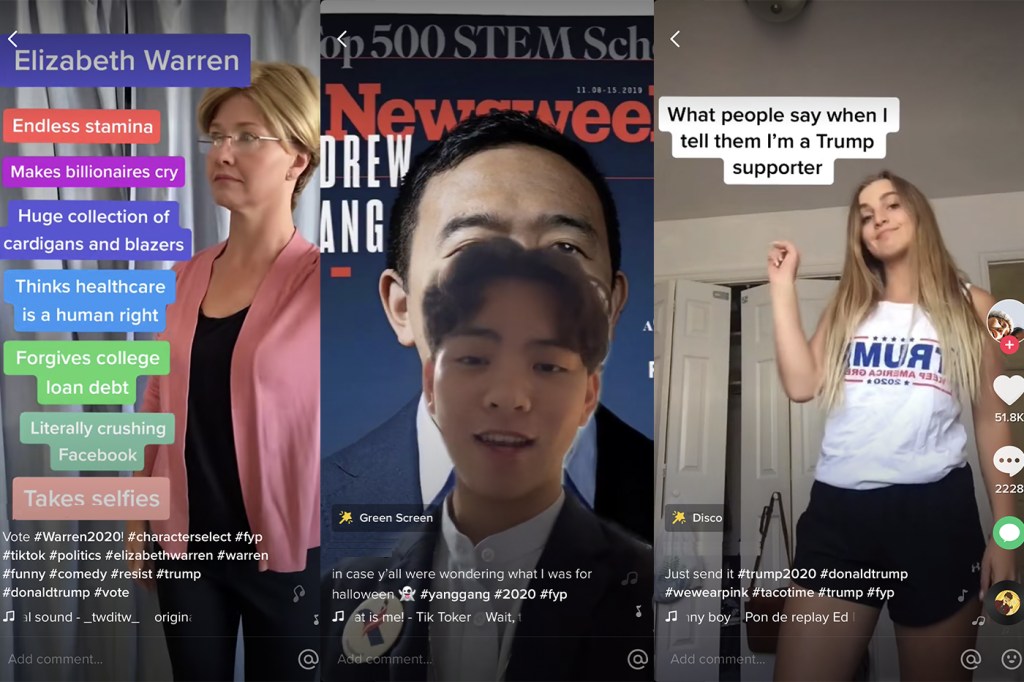Young people are talking politics on TikTok. Is this a good thing?

A meme has been making the rounds on the internet recently, purporting that the U.S. Constitution allows an impeached president to run for office an additional two terms so long as there is no conviction by the Senate.
The fact-checking website Snopes set the record straight in October, rating the claim as false, but the meme appeared to have been revived last week by users of Facebook and the video-sharing app TikTok amid the Senate impeachment trial of President Donald Trump.

Nicholas Beauchamp is an assistant professor of political science in the College of Social Sciences and Humanities at Northeastern. Photo by Matthew Modoono/Northeastern University
One widely shared video perpetuating the claim reportedly received tens of thousands of views before it was removed by TikTok, underscoring the perception that the app is becoming increasingly political as it grows in popularity, especially among young people.
A report by The Wall Street Journal contends that young people are flocking to TikTok to express their political views, promote their favorite candidates, and react to political news. While this appears to be a good thing at face value, some in the field of law and politics are concerned that, as has happened with Facebook and Twitter, TikTok could be used to spread false information ahead of the presidential election.
Nicholas Beauchamp, an assistant professor of political science at Northeastern, says that though the platform doesn’t seem to be inherently suited for political content, it could be susceptible to the spread of misinformation.
“One thing that’s interesting about it as a platform for studying is that it is imagery, which is hard to track down and hard to detect,” Beauchamp says. “Short videos are even harder to measure. It’s going to be really hard to track the spread of [false information on TikTok], much more so than, say, Twitter, where even as images and memes rose in prominence, the bulk of it was through text, which is pretty easy to analyze.”
One reason that TikTok, which boasts 123 million downloads in the U.S. alone, is attractive to young users in particular is that, relative to other social media platforms, it’s easy to create content that goes viral. As such, there is concern that propaganda such as the post about the Constitution that went viral on Facebook and TikTok could pose a challenge for the platform to spot and flag, and therefore fictitious posts run the risk of spreading unabated.
Beauchamp muses that our fears about young people spreading false information may be unfounded. He cited the research of his colleague, University Distinguished Professor David Lazer, which showed that older and more conservative people were responsible for spreading the bulk of the fake news shared during the last election cycle.
“In some ways what that might lead you want to do is be slightly more optimistic that these newer platforms that are almost exclusively dominated by younger people might be less subject to these sorts of problems,” says Beauchamp.
He notes also that on sites such as Facebook and Twitter, users shared content not based on whether or not it was true, but because they found the content entertaining. In an effort to circumvent the spread of fake news, last week, Twitter announced a new feature that enables users to flag information that appears to be misleading users about the election in November.
What remains to be seen, says Beauchamp, is whether young people will fall prey to the misinformation they see on TikTok. There is some evidence, he says, that young people tend to be slightly more skeptical of what they see online.
“That’s certainly the goal or the dream, that growing up with this leads you to be a little bit more skeptical and careful of your persona,” Beauchamp says. “But there’s evidence in both directions on that sort of thing.”
Beauchamp opines that stronger regulations by the government of media companies and tech giants will be necessary in countering the spread of false information. Until then, he says that companies such as Facebook have set a good example in employing strategies to reduce the distribution of false news rather than resorting to direct removal or censorship.
“When it comes to misinformation, maybe that’s a slightly more tractable situation where you don’t have to censor everything; you can just sort of turn the dials on the spreading of things if you discover something severely false and spreading at a great rate,” says Beauchamp.
For media inquiries, please contact Mike Woeste at m.woeste@northeastern.edu or 617-373-5718.





